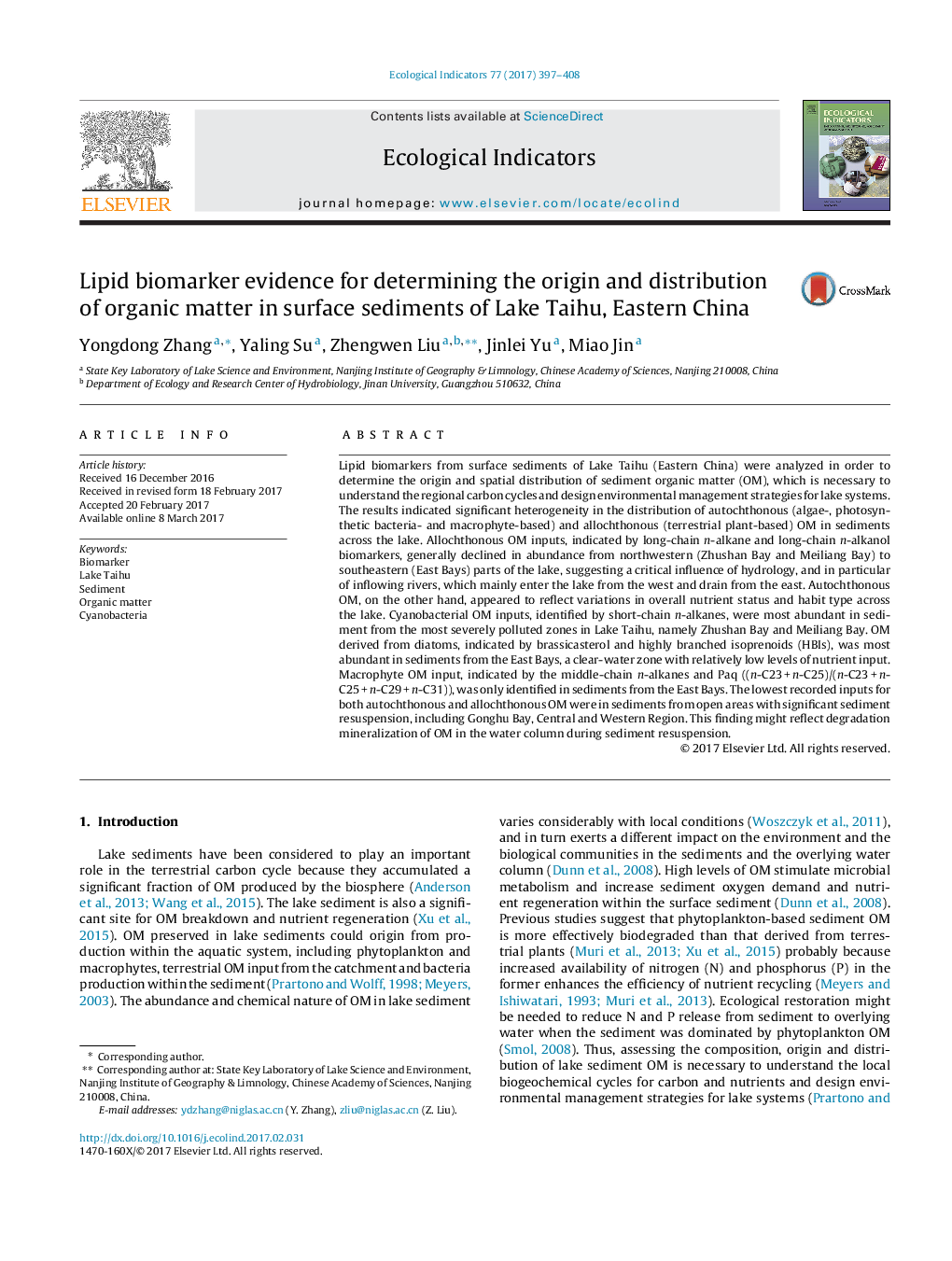| کد مقاله | کد نشریه | سال انتشار | مقاله انگلیسی | نسخه تمام متن |
|---|---|---|---|---|
| 5741743 | 1617125 | 2017 | 12 صفحه PDF | دانلود رایگان |

- Organic matter (OM) in sediment of Lake Taihu could be sourced from cyanobacteria, diatoms, dinoflagellates, macrophytes, terrestrial plants and others.
- OM input in the sediment exhibited a significant spatial variation across the lake.
- The autochthonous OM input reflects variation in nutrient status and habit type.
- The allochthonous OM input is dependent on hydrological conditions in the watershed.
Lipid biomarkers from surface sediments of Lake Taihu (Eastern China) were analyzed in order to determine the origin and spatial distribution of sediment organic matter (OM), which is necessary to understand the regional carbon cycles and design environmental management strategies for lake systems. The results indicated significant heterogeneity in the distribution of autochthonous (algae-, photosynthetic bacteria- and macrophyte-based) and allochthonous (terrestrial plant-based) OM in sediments across the lake. Allochthonous OM inputs, indicated by long-chain n-alkane and long-chain n-alkanol biomarkers, generally declined in abundance from northwestern (Zhushan Bay and Meiliang Bay) to southeastern (East Bays) parts of the lake, suggesting a critical influence of hydrology, and in particular of inflowing rivers, which mainly enter the lake from the west and drain from the east. Autochthonous OM, on the other hand, appeared to reflect variations in overall nutrient status and habit type across the lake. Cyanobacterial OM inputs, identified by short-chain n-alkanes, were most abundant in sediment from the most severely polluted zones in Lake Taihu, namely Zhushan Bay and Meiliang Bay. OM derived from diatoms, indicated by brassicasterol and highly branched isoprenoids (HBIs), was most abundant in sediments from the East Bays, a clear-water zone with relatively low levels of nutrient input. Macrophyte OM input, indicated by the middle-chain n-alkanes and Paq ((n-C23Â +Â n-C25)/(n-C23Â +Â n-C25Â +Â n-C29Â +Â n-C31)), was only identified in sediments from the East Bays. The lowest recorded inputs for both autochthonous and allochthonous OM were in sediments from open areas with significant sediment resuspension, including Gonghu Bay, Central and Western Region. This finding might reflect degradation mineralization of OM in the water column during sediment resuspension.
Journal: Ecological Indicators - Volume 77, June 2017, Pages 397-408